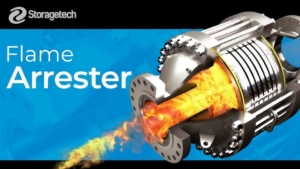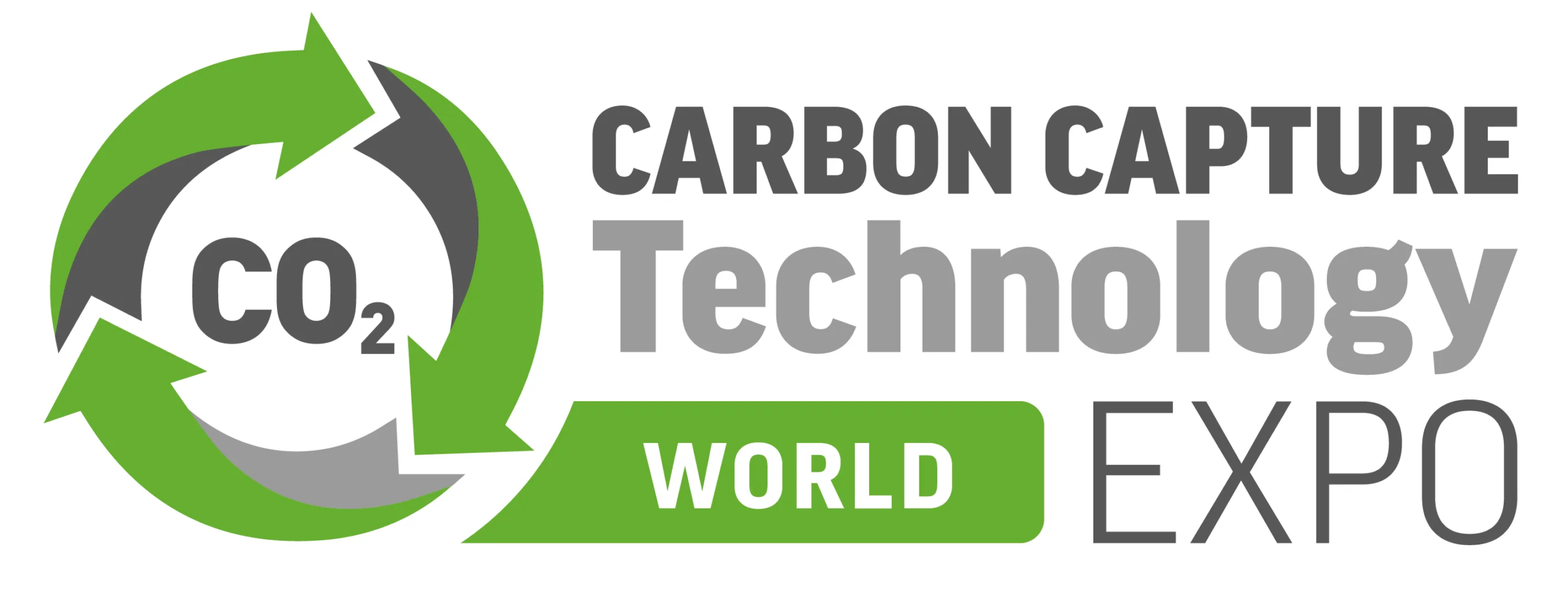
Article: Flame Arrester – Definition, Working Principle, Types, and Applications
Introduction
In industrial environments, safety is not only about protecting workers but also about ensuring the continuity of operations. When dealing with flammable gases or vapors, the risk of fire and explosion becomes a critical concern. To prevent flames from propagating through a system, one of the most essential safety devices used is the flame arrester.
A flame arrester, sometimes referred to as a flame trap or flame barrier, plays a vital role in stopping flame fronts from traveling through pipelines, storage tanks, or process equipment. In this article, we will explore in detail what a flame arrester is, how it works, the different types available, and how to ensure proper maintenance.

Flame Arrester
What is a Flame Arrester?
Flame Arrester is a safety device designed to stop the transmission of flames in gas or vapor piping systems. It acts as a physical barrier that quenches the flame while allowing gas or vapor to pass through. Its main function is to prevent flame flashback, which could otherwise lead to catastrophic explosions or equipment damage.
Typically constructed from stainless steel or other corrosion-resistant materials, a flame arrester contains a specially designed element—often with a fine mesh or crimped metal ribbon structure—that dissipates heat from the flame, reducing the gas temperature below its ignition point.
Working Principle
The operation of a flame arrester is based on heat absorption and flame quenching.
Step-by-step process:
-
Flame approaches: A flame front travels through the gas or vapor in a pipeline or vent system.
-
Contact with the flame element: The flame enters the flame arrester and comes into contact with its internal matrix of narrow passages.
-
Heat dissipation: The metal absorbs the flame’s heat, rapidly cooling the gases.
-
Flame extinction: Once the temperature falls below the ignition point, combustion stops, and the flame cannot pass through.
This process happens in milliseconds and is highly effective in preventing flame propagation.
Types of Flame Arresters
-
End-of-Line Flame Arrester
-
Installed at the end of a pipeline or tank vent.
-
Prevents flames from entering from the atmosphere.
-
-
In-Line Flame Arrester
-
Installed directly within a pipeline.
-
Stops flame propagation in both directions while allowing continuous flow.
-
-
Deflagration Flame Arrester
-
Designed for low-velocity flame propagation.
-
Effective for short-distance flame protection.
-
-
Detonation Flame Arrester
-
Built to withstand high-speed, high-pressure detonations.
-
Suitable for applications where flame speed can exceed sonic velocity.
-
Applications of Flame Arresters
Flame arresters are widely used in industries where flammable gases or vapors are present:
-
Oil and Gas Industry: Refineries, fuel storage tanks, pipeline systems.
-
Chemical Industry: Reactors, solvent tanks, chemical process plants.
-
Food and Beverage: Distilleries, ethanol production, fermentation systems.
-
Power Generation: Biogas facilities, flare systems.
-
Marine Applications: Ship fuel systems and offshore oil platforms.
Standards and Certifications
arresters must meet strict international standards to ensure reliability:
-
ISO 16852 – General requirements and testing for flame arresters.
-
ATEX Directives – Safety requirements for explosive atmospheres (EU).
-
API 2028 – Guidelines for flame arresters in petroleum storage tanks.
Choosing certified devices ensures compliance and safety in hazardous environments.
Maintenance and Inspection
Regular inspection and cleaning are essential for maintaining flame arrester efficiency.
-
Visual Inspection: Check for corrosion, blockages, or damage.
-
Cleaning: Remove dust, debris, or chemical deposits from the flame element.
-
Performance Testing: Measure pressure drop and airflow capacity.
-
Part Replacement: Replace damaged or worn components immediately.
In harsh industrial conditions, maintenance intervals may need to be shorter than the manufacturer’s recommendation.
Choosing the Right Flame Arrester
When selecting a flame arrester, consider:
-
Gas Type: The chemical properties of the gas or vapor.
-
Operating Conditions: Pressure, temperature, and flow rate.
-
Direction of Protection: One-way or two-way flame protection.
-
Installation Location: End-of-line, in-line, or specific process equipment.
Conclusion
arresters are essential for safeguarding industrial facilities from fire and explosion hazards. By stopping flame propagation in pipelines, vents, and storage systems, they protect both people and assets.
Selecting the correct type, ensuring it meets international standards, and performing regular maintenance are crucial steps in guaranteeing safety. In environments with flammable gases or vapors, a arrester is not just a piece of equipment—it is a critical investment in operational security.
Frequently Asked Questions (FAQ) About Arresters
1. How does a flame arrester work in real-world applications?
arrester works by using a specially designed element with small passages that absorb and dissipate heat from an approaching flame. In practical terms, when a flame front tries to move through a pipeline or vent, the arrester reduces its temperature below ignition point, stopping combustion instantly.
2. What is the difference between a detonation flame arrester and a deflagration flame arrest?
A detonation arrester is engineered to handle extremely fast-moving flames caused by an explosion, often at supersonic speeds. A deflagration flame arrester, on the other hand, is meant for slower-moving flames and is typically used for shorter distances between the ignition source and the arrester.
3. Can flame arresters be used for all types of gases?
No. arresters must be matched to the specific gas or vapor type. Different gases have unique ignition temperatures and combustion characteristics, so the arrester element design must be compatible with the process medium.
4. How often should a flame arrester be inspected?
Inspection frequency depends on the operating environment, but most manufacturers recommend at least quarterly inspections in normal conditions. In dusty, humid, or corrosive environments, monthly inspections may be necessary.
Best Practices for Flame Arrester Installation
-
Follow Manufacturer Guidelines: Always install flame arresters according to the specific instructions provided by the manufacturer.
-
Ensure Proper Orientation: Many flame arresters are directional, meaning they must be installed in the correct flow direction.
-
Avoid Blockages: Keep the pipeline or vent clear of debris to prevent reduced airflow.
-
Use Certified Products: Only choose flame arresters with certifications like ISO 16852, ATEX, or API compliance.
-
Integrate with Other Safety Systems: Combine arresters with pressure relief valves, gas detection systems, and emergency shutdown devices for maximum safety.
Why Choosing the Right Flame Arrester Matters
In high-risk industries, the difference between the right and wrong arrester can mean the difference between a safe operation and a catastrophic incident. Selecting a flame arrester that matches your gas type, flow conditions, and installation point ensures:
-
Maximum fire and explosion prevention
-
Reduced downtime and maintenance costs
-
Compliance with safety regulations
-
Long-term operational reliability
Advanced Engineering Considerations
In modern industrial design, preventing fire propagation within piping systems requires more than simply installing protective devices. Engineers must take into account the fluid dynamics of the system, the chemical properties of the medium being transported, and the environmental conditions in which the system operates.
One critical factor is the laminar versus turbulent flow of gases. Turbulent flow can create unpredictable flame paths and higher flame speeds, which may challenge the performance of certain safety barriers. Computational fluid dynamics (CFD) simulations are often used to predict how a flame might behave within a given pipeline configuration, allowing for more accurate selection and positioning of protective components.
Material selection is another area of focus. High-grade stainless steel is commonly used because it offers resistance to both corrosion and heat. However, in environments containing corrosive chemicals, special alloys or coatings may be required to ensure long-term reliability. Ceramic-based components are also utilized in extreme high-temperature scenarios, as they can withstand conditions that would quickly degrade metal structures.
Thermal expansion is a subtle yet important consideration. When exposed to high heat, metals expand, which can alter the size of internal passages and potentially reduce airflow. This means safety devices must be engineered to maintain their functionality even under significant thermal stress.
Maintenance schedules must also be adapted to the operating environment. In facilities where dust, soot, or condensates are present, performance can be compromised if buildup is not removed promptly. In such cases, integrating automated cleaning systems or designing components for rapid removal and reinstallation can greatly improve uptime and safety compliance.
Finally, safety systems should never be viewed in isolation. Combining multiple protective measures—such as gas detection, explosion venting, and automatic shutdown controls—creates a layered defense strategy, significantly reducing the overall risk profile of an installation.
Final Thoughts
Flame arresters are more than just passive safety devices—they are a frontline defense against some of the most dangerous hazards in industrial operations. When properly chosen, installed, and maintained, they provide a reliable safeguard that can prevent millions in damages and protect lives.
Whether you operate in oil and gas, chemical processing, power generation, or marine applications, understanding how a flame arrester works and selecting the correct model for your needs should be a top priority. In hazardous environments, safety is not optional—it’s a strategic necessity.



